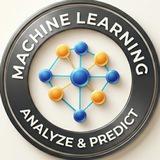Topic: Handling Datasets of All Types – Part 5 of 5: Working with Time Series and Tabular Data
---
1. Understanding Time Series Data
• Time series data is a sequence of data points collected over time intervals.
• Examples: stock prices, weather data, sensor readings.
---
2. Loading and Exploring Time Series Data
---
3. Key Time Series Concepts
• Trend: Long-term increase or decrease in data.
• Seasonality: Repeating patterns at regular intervals.
• Noise: Random variations.
---
4. Preprocessing Time Series
• Handle missing data using forward/backward fill.
• Resample data to different frequencies (daily, monthly).
---
5. Working with Tabular Data
• Tabular data consists of rows (samples) and columns (features).
• Often requires handling missing values, encoding categorical variables, and scaling features (covered in previous parts).
---
6. Summary
• Time series data requires special preprocessing due to temporal order.
• Tabular data is the most common format, needing cleaning and feature engineering.
---
Exercise
• Load a time series dataset, fill missing values, and resample it monthly.
• For tabular data, encode categorical variables and scale numerical features.
---
#TimeSeries #TabularData #DataScience #MachineLearning #Python
https://t.iss.one/DataScienceM
---
1. Understanding Time Series Data
• Time series data is a sequence of data points collected over time intervals.
• Examples: stock prices, weather data, sensor readings.
---
2. Loading and Exploring Time Series Data
import pandas as pd
df = pd.read_csv('time_series.csv', parse_dates=['date'], index_col='date')
print(df.head())
---
3. Key Time Series Concepts
• Trend: Long-term increase or decrease in data.
• Seasonality: Repeating patterns at regular intervals.
• Noise: Random variations.
---
4. Preprocessing Time Series
• Handle missing data using forward/backward fill.
df.fillna(method='ffill', inplace=True)
• Resample data to different frequencies (daily, monthly).
df_resampled = df.resample('M').mean()---
5. Working with Tabular Data
• Tabular data consists of rows (samples) and columns (features).
• Often requires handling missing values, encoding categorical variables, and scaling features (covered in previous parts).
---
6. Summary
• Time series data requires special preprocessing due to temporal order.
• Tabular data is the most common format, needing cleaning and feature engineering.
---
Exercise
• Load a time series dataset, fill missing values, and resample it monthly.
• For tabular data, encode categorical variables and scale numerical features.
---
#TimeSeries #TabularData #DataScience #MachineLearning #Python
https://t.iss.one/DataScienceM
❤5
